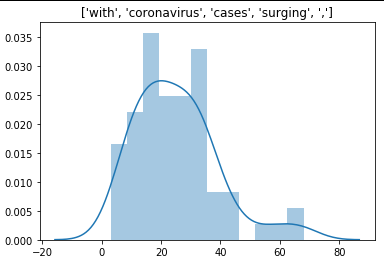Writers like to write. Shocking, I know. But how much are we supposed to write before people lose interest?
To write is to translate the billions of interelated ideas in our minds into a few lines of prose, with the hope that whoever reads it will parse the same meaning. Long, complex writing is our way of making sure text holds its message.
But, it also makes reading frustrating.
When people talk about measuring good writing, sentence length often comes up. It makes sense, doesn’t it? Long sentences are boring, brief ones are “punchier” (whatever that means). So, let’s all write really short, right?
This doesn’t always work out, as Gary Provost demonstrates here:
This sentence has five words. Here are five more words. Five-word sentences are fine. But several together become monotonous. Listen to what is happening. The writing is getting boring. The sound of it drones. It’s like a stuck record. The ear demands some variety.
Quick sentences don’t work if we lack “flow”. A lot of people talk about writing lacking “flow” — but don’t understand what they mean by it. Luckily, Provost gives us the solution.
Now listen. I vary the sentence length, and I create music. Music. The writing sings. It has a pleasant rhythm, a lilt, a harmony. I use short sentences. And I use sentences of medium length. And sometimes, when I am certain the reader is rested, I will engage him with a sentence of considerable length, a sentence that burns with energy and builds with all the impetus of a crescendo, the roll of the drums, the crash of the cymbals–sounds that say listen to this, it is important.”
Varying sentence length is what seperates good writers from mediocre ones. Editors know this. Newer writers struggle with it. It defies a writer’s every instinct to shut up, be concise, and let words speak for themselves until the moment is right.
But now the problem is how you’re supposed to apply this lesson. How short is too short? How much is too much? Should I have three 6 word long sentences, followed by a 10 word one? It’s an easy criticism to make — that a writer lacks “flow”. It’s harder to say exactly how to fix it.
There’s a mathematical way to measure how much values differ called “standard deviation”. Using a formula we can calculate how much values “deviate” (ie. are different) from the mean. If we count how many words are in each sentence we can find out the standard deviation of sentence length for an entire text. The higher the value is, the more variety in length we’ll find.
Back in the day, getting metrics on longer texts took either hours of your time or an armada of interns. Neither of these were accessible to a starving writer. Today, technology can automate the work that tedium makes impossible. We can do this in a few lines of Python. Behold:
sent_tok = nltk.sent_tokenize(text)
print(len(sent_tok))
sent_len=[]
for i in sent_tok:
sent_w = nltk.word_tokenize(i)
sent_len.append(len(sent_w))
print(sent_len)
df = pd.DataFrame(sent_len)
print(“Mean Sentence Length: “ + str(statistics.mean(sent_len)))
print(“Standard Devation of Sentence Length: “ + str(statistics.stdev(sent_len)))
(Note: I adapted this code from the one in this blog. It’s also got some great insights into academic writing if you want to read around!)
The code breaks up the text into sentences, then breaks each sentence into words (or, as the code calls them, “tokens”). After removing punctuation, it counts the number of words in each sentence and makes a list of these values. We can then run calculations on those lists. If you don’t understand this, don’t worry! All you need to know is we’re going to get three results: a list of sentence lengths, the mean average, and the standard deviation.
#writing-tips #writing #python #copywriting
